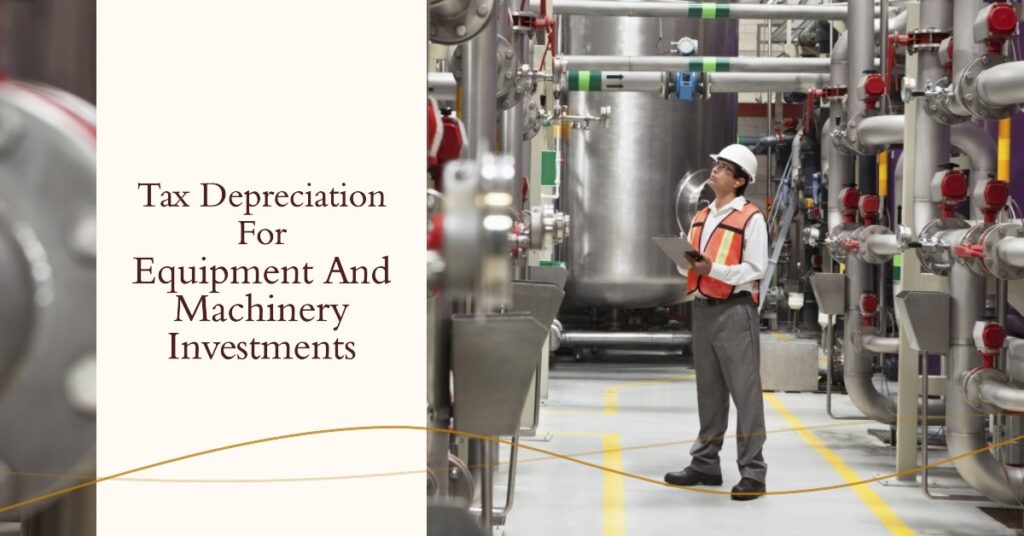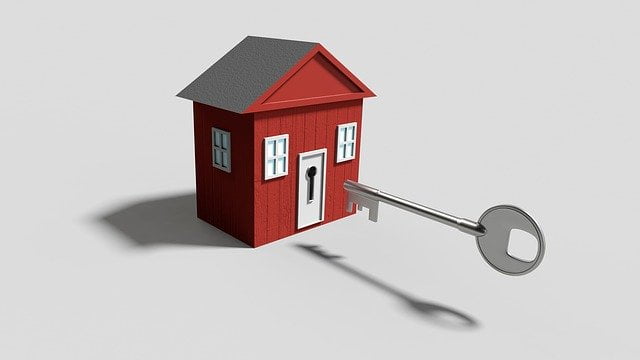Tax depreciation is a cost-saving tool for businesses that invest in equipment and machinery. It allows businesses to recover the cost of investments over time through deductions on their taxes. With proper optimization, businesses can maximize their tax deductions while minimizing the impact on their bottom line. This article will provide an overview of how to optimize tax depreciation for equipment and machinery investments by providing insight into the calculation of tax deduction, strategies for optimizing tax depreciation, tips for keeping accurate records, and guidance from a qualified tax professional.
Understanding the Basics of Tax Depreciation
This section provides an overview of the fundamentals related to reducing costs associated with capital investments. Maximizing deductions, filing deadlines, and claiming credits are important elements that can help lower tax liability on equipment and machinery purchases. It is also crucial to understand what types of depreciation methods are available for a business, as well as any applicable limits or rules associated with them.
The Internal Revenue Service (IRS) allows taxpayers to choose between two popular depreciation methods – straight-line and accelerated – when calculating the cost basis of their capital asset investments. The straight-line method is based on an equal distribution of costs over several years, while accelerated depreciation allows for larger deductions in earlier years. Depending on the type of asset purchased, additional options may be available such as bonus depreciation or Section 179 deductions.
Businesses must also be aware of any limits imposed by the IRS that could potentially limit how much they can deduct from their taxes each year. This includes several statutes such as MACRS (Modified Accelerated Cost Recovery System), ADS (Alternative Depreciation System), and AMT (Alternative Minimum Tax). Additionally, businesses should ensure that all documentation related to the purchase is kept on file in order to establish proof of ownership and accurately calculate their deduction amount when filing taxes.
Finally, it is essential for businesses to familiarize themselves with all relevant filing deadlines so they don’t miss out on potential savings opportunities due to late filings or incorrect information provided on their tax return forms. Understanding these concepts will provide a foundation for calculating the tax deduction for equipment and machinery purchases effectively.
Calculating the Tax Deduction for Equipment and Machinery
Calculating the deduction associated with equipment and machinery investments requires an understanding of relevant tax regulations. To maximize value, it is important to track costs throughout the purchase process as well as any expenses related to maintaining and operating the asset. Additionally, some businesses may qualify for certain tax credits that can help reduce their overall taxes associated with these investments.
When allocating losses, businesses should consider how a depreciation method will impact their ability to claim deductions. For example, choosing the straight-line method of depreciation could limit short-term deductions but might be more beneficial in terms of long-term planning. On the other hand, using accelerated methods of depreciation can provide more immediate benefits but could lead to lower recoveries later on in the life cycle of an asset.
Qualifying assets for maximum tax savings depends on both federal and state laws and regulations. Business owners should consult with a tax advisor or accountant to determine which type of assets are eligible for special treatment under current laws and what strategies they can use to optimize their returns when making large purchases.
To ensure that business owners are taking full advantage of available opportunities, they need to be aware not only of applicable deductions but also potential tax credits that may be available depending on the type or cost of an asset purchased. This knowledge can help them plan accordingly so that they are able to maximize their value when making investment decisions related to equipment and machinery purchases.
Optimizing Your Tax Depreciation Strategies
Maximizing returns on capital investments can be achieved by carefully selecting the optimal tax depreciation strategies. Depending on the type of asset and its expected life, different approaches may provide greater savings. Business owners should analyze costs and review their industry trends to determine how they can maximize deductions. Additionally, it is important to review the federal tax code for any changes in depreciation rates as these affect returns over time.
| Benefits | Drawbacks | |||
| Straight-line Method (SLM) | Lowest costSimplest calculation method | Lowest returnNo acceleration benefits | ||
| Double Declining Balance (DDB) | Accelerated benefitsHigher return than SLM | Complex calculationsMay not fully utilize benefit due to required switch back to SLM at end of estimated useful life | ||
| 150% Declining Balance (150%) | Higher benefits than DDBFully utilizes accelerated depreciation | More complex calculations than DDBPotential for higher tax liability when switching from 150% to SLM at end of estimated useful life |
By understanding the pros and cons associated with each option, businesses can make an informed decision that affects long-term gains. Utilizing a hybrid approach that combines multiple methods provides another layer of flexibility allowing companies a greater ability to optimize their returns while managing cash flow efficiently. Without effective management, investments may yield lower returns that could have been avoided through the use of improved tax depreciation strategies. At this point, owners must consider keeping accurate records when tracking equipment assets over time in order to ensure proper reporting and compliance with IRS regulations.
Keeping Accurate Records
Accurate records provide a critical foundation for businesses to protect their assets and ensure compliance with IRS regulations. When it comes to optimization of tax depreciation for equipment and machinery investments, careful record-keeping is essential in order to maximize deductions. It is important that business owners stay up-to-date on the latest guidelines from the Internal Revenue Service (IRS) when claiming deductions, as deadlines for filing can be subject to change. Furthermore, keeping track of costs associated with these investments allows businesses to take advantage of the various depreciation methods available:
- Straight Line Method
- Units of Production Method
- Modified Accelerated Cost Recovery System (MACRS)
- Declining Balance Method
In addition, accurate records are necessary for filing relevant forms such as Form 4562 and Form 8829 in order to properly claim deductions. Businesses should also keep track of any repairs or improvements made on equipment or machinery that may qualify for additional deductions. Finally, having comprehensive records serves as evidence that all required forms have been filed correctly and all applicable tax laws have been followed; this helps provide protection against potential audits from the IRS. Without proper documentation, a business owner could miss out on valuable deductions or incur costly penalties due to noncompliance with federal tax laws. For this reason, it is vital for companies investing in equipment and machinery to maintain detailed and accurate records at all times. By taking these steps, businesses can maximize their tax savings while minimizing any potential risks associated with audits from the IRS – a crucial component when optimizing one’s investment strategy around tax depreciation.
Consulting a Tax Professional for Advice
Consulting a tax professional can be beneficial when attempting to effectively manage the financial implications of purchasing equipment and machinery. Tax professionals can help identify potential deductions, research available incentives, compare options, and advise on claiming credits and analyzing returns. This advice can make it easier to maximize the tax savings associated with these investments.
The table below outlines some of the benefits that can be gained from consulting a tax professional:
| Benefit | Description |
| Identifying Deductions | Tax professionals will be able to review investments made in machinery or equipment to ensure all relevant deductions are taken into account. |
| Researching Incentives | Tax professionals will have an understanding of all applicable incentives available for equipment and machinery purchases. |
| Comparing Options | They will also have access to software programs that allow them to compare different investment options in order to maximize returns. |
| Claiming Credits & Analyzing Returns | A tax professional will be able to provide guidance on which credits should be claimed and analyze any potential returns associated with those credits. |
With this guidance it is possible for business owners to take advantage of every deduction they are entitled to while minimizing their overall taxable income related to such investments – ultimately helping them save money over time. It is important for business owners who are making large capital purchases such as new machinery or equipment, however, not only consult but retain a knowledgeable tax advisor so that they may receive the most up-to-date information regarding their specific situation as well as keep track of any changes in regulations or laws that may apply over time since laws change regularly..
Conclusion
The optimization of tax depreciation for investments in equipment and machinery is a complex process that requires careful consideration of all the available options. It is important to remember that understanding the basics of tax depreciation, calculating deductions, and optimizing strategies are essential steps in making sure that one’s business investments are managed correctly. In addition, accurate records should be kept at all times and the advice of a tax professional should be sought out if any questions arise. Through this knowledge and diligence, businesses can ensure their investments are maximized for maximum financial benefit.
As an allegory, it can be said that investing in equipment and machinery is like planting a garden; you must carefully plan what to plant, when to harvest, how much water to use, and what kind of soil will yield the best results. The same principles apply when considering tax depreciation – careful planning and diligent effort will lead to greater returns on investment over time.




